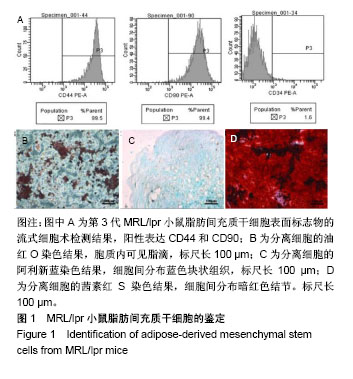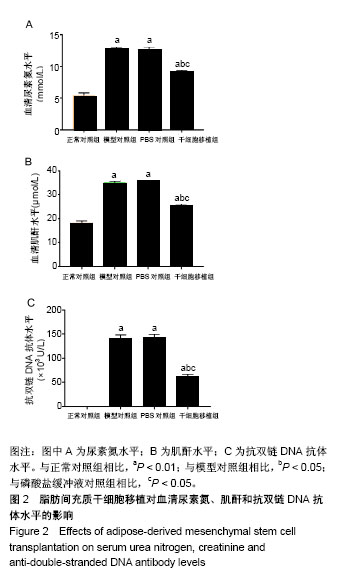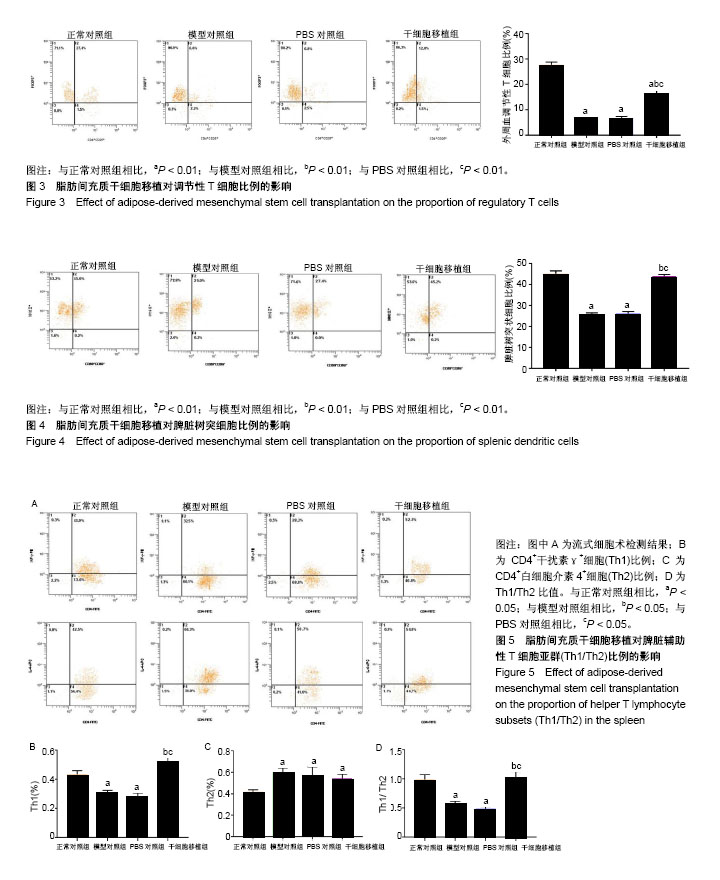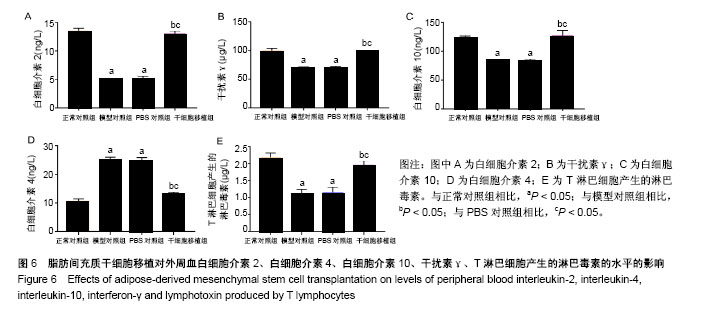| [1] Lee YJ, Park JA, Kwon H, et al. Role of Stem Cell-Like Memory T Cells in Systemic Lupus Erythematosus. Arthritis Rheumatol. 2018;70(9): 1459-1469. [2] Wang D, Wang S, Huang S, et al. Serum IFN-γ Predicts the Therapeutic Effect of Mesenchymal Stem Cells Transplantation in Systemic Lupus Erythematosus Patients. Stem Cells Transl Med. 2017;6(9):1777-1785.[3] Gao L, Bird AK, Meednu N, et al. Bone Marrow-Derived Mesenchymal Stem Cells From Patients With Systemic Lupus Erythematosus Have a Senescence-Associated Secretory Phenotype Mediated by a Mitochondrial Antiviral Signaling Protein-Interferon-β Feedback Loop. Arthritis Rheumatol. 2017;69(8):1623-1635.[4] Ji J, Wu Y, Meng Y, et al. JAK-STAT signaling mediates the senescence of bone marrow-mesenchymal stem cells from systemic lupus erythematosus patients. Acta Biochim Biophys Sin (Shanghai). 2017;49(3):208-215.[5] Deng W, Chen W, Zhang Z, et al. Mesenchymal stem cells promote CD206 expression and phagocytic activity of macrophages through IL-6 in systemic lupus erythematosus. Clin Immunol. 2015;161(2):209-216. [6] Wang D, Huang S, Yuan X, et al. The regulation of the Treg/Th17 balance by mesenchymal stem cells in human systemic lupus erythematosus. Cell Mol Immunol. 2017;14(5):423-431.[7] 阮光萍,王金祥,杨建勇,等.系统性红斑狼疮小鼠骨髓间充质干细胞的成骨、成脂分化能力下降[J].中国组织工程研究, 2014,18(1):1-6. [8] 罗利梅,骆辑,周晓泉,等.间充质干细胞对系统性红斑狼疮T淋巴细胞的免疫调节作用[J].免疫学杂志,2016,32(8):681-686.[9] Wang Q, Qian S, Li J, et al. Combined transplantation of autologous hematopoietic stem cells and allogenic mesenchymal stem cells increases T regulatory cells in systemic lupus erythematosus with refractory lupus nephritis and leukopenia. Lupus. 2015;24(11): 1221-1226.[10] Gu Z, Meng Y, Tao T, et al. Endoplasmic reticulum stress participates in the progress of senescence of bone marrow-derived mesenchymal stem cells in patients with systemic lupus erythematosus. Cell Tissue Res. 2015;361(2):497-508. [11] Choi EW, Lee HW, Shin IS, et al. Comparative Efficacies of Long-Term Serial Transplantation of Syngeneic, Allogeneic, Xenogeneic, or CTLA4Ig-Overproducing Xenogeneic Adipose Tissue-Derived Mesenchymal Stem Cells on Murine Systemic Lupus Erythematosus. Cell Transplant. 2016;25(6):1193-1206. [12] He X, Zhang Y, Zhu A, et al. Suppression of interleukin 17 contributes to the immunomodulatory effects of adipose-derived stem cells in a murine model of systemic lupus erythematosus. Immunol Res. 2016;64(5-6):1157-1167.[13] Park MJ, Kwok SK, Lee SH, et al. Adipose tissue-derived mesenchymal stem cells induce expansion of interleukin-10-producing regulatory B cells and ameliorate autoimmunity in a murine model of systemic lupus erythematosus. Cell Transplant. 2015;24(11):2367-2377.[14] Gu Z, Tan W, Ji J, et al. Rapamycin reverses the senescent phenotype and improves immunoregulation of mesenchymal stem cells from MRL/lpr mice and systemic lupus erythematosus patients through inhibition of the mTOR signaling pathway. Aging (Albany NY). 2016;8(5):1102-1114. [15] Zhao W, Wu C, Li LJ, et al. RNAi Silencing of HIF-1α Ameliorates Lupus Development in MRL/lpr Mice. Inflammation. 2018;41(5):1717-1730.[16] Zhang Z, Liu D, Zhang X, et al. Erythropoietin Treatment Ameliorates Lupus Nephritis of MRL/lpr Mice. Inflammation. 2018;41(5):1888-1899. [17] 张伟,庞春艳,王永福.脂肪间充质干细胞对MRL/lpr小鼠的治疗效果及对脾脏Th17/Treg细胞平衡的影响[J].北京大学学报(医学版),2017,49(6):974-978. [18] 王艳,胡翰青,邢红艳,等.小鼠骨髓干细胞的分离培养鉴定及诱导分化的研究[J].西南国防医药,2013,1(1):8-11.[19] 岳永莉,张祥,张丽春,等.大鼠脂肪间充质干细胞的分离鉴定与生物学特性研究[J].中国细胞生物学学报,2016, 38(11):1309-1316.[20] Liang J, Sun L. Mesenchymal stem cells transplantation for systemic lupus erythematosus. Int J Rheum Dis. 2015;18(2):164-171.[21] 王照娟,陈龙华.丹皮提取物对系统性红斑狼疮模型小鼠的免疫调节作用及其机制研究[J].中国临床药理学杂志,2015,31(13):1279-1282.[22] Liu RH, Li YQ, Zhou WJ, et al. Supplementing mesenchymal stem cells improves the therapeutic effect of hematopoietic stem cell transplantation in the treatment of murine systemic lupus erythematosus. Transplant Proc. 2014;46(5):1621-1627.[23] Li LY, Zhang HR, Jiang ZL, et al. Overexpression of Dendritic Cell-Specific Intercellular Adhesion Molecule-3-Grabbing Nonintegrin in Dendritic Cells Protecting against Aspergillosis. Chin Med J (Engl). 2018;131(21):2575-2582. [24] 马晓蕾,高那,刘政邑,等.苯烯莫德对特应性皮炎患者外周血单个核细胞白细胞介素4和10、γ干扰素、T细胞转化因子β水平的影响[J].中华皮肤科杂志,2017,50(1):26-28.[25] 孙铀,张凤山,张志毅.骨髓间质干细胞对系统性红斑狼疮患者调节性T细胞的免疫调节作用[J].中华内科杂志,2007,46(12):1018-1021.[26] Kasumagi?-Halilovic E, Cavaljuga S, Ovcina-Kurtovic N, et al. Serum Levels of Interleukin-2 in Patients with Alopecia Areata: Relationship with Clinical Type and Duration of the Disease. Skin Appendage Disord. 2018;4(4):286-290.[27] 翟国丽,王兴强,徐红,等.系统性红斑狼疮异常T细胞信号及其靶向治疗研究进展[J].实用医学杂志,2016,32(19):3274-3276.[28] 郭子宽,王立生,吴祖泽.间充质干细胞在组织再生和免疫调节治疗中的应用[J].中国医药生物技术,2006,1(1):58-61.[29] Gotoh K, Morisaki T, Setoyama D, et al. Mitochondrial p32/C1qbp Is a Critical Regulator of Dendritic Cell Metabolism and Maturation. Cell Rep. 2018;25(7):1800-1815.e4.[30] Mizumoto Y, Katsuda M, Miyazawa M, et al. In Vivo Antigen Delivery to Dendritic Cells-A Novel Peptide Vaccine for Cancer Therapy. Gan To Kagaku Ryoho. 2018;45(10):1469-1471.[31] Jan RH, Chen CJ, Hong YR, et al. A surface antigen of Orientia tsutsugamushi activates human monocyte-derived dendritic cells via nuclear factor-kB & p38 mitogen-activated protein kinase pathways. Indian J Med Res. 2018;148(2):215-224. [32] Ng S, Bennett NJ, Schulze J, et al. Genetically-encoded fragment-based discovery of glycopeptide ligands for DC-SIGN. Bioorg Med Chem. 2018;26(19):5368-5377. [33] 顾卫军,张庆国,朱伟,等.系统性红斑狼疮外周血Tc与Th细胞漂移的变化及意义[J].中国实验血液学杂志,2016,24(5):1533-1538.[34] 郝慧琴,张少然,李小峰,等.Th1及Th2型细胞因子与系统性红斑狼疮的相关研究[J].中国药物与临床,2018,18(1):7-9.[35] Zhang JF, Li Y, Zhang AZ, et al. Expression and pathological significance of CC chemokine receptor 7 and its ligands in the airway of asthmatic rats exposed to cigarette smoke. J Thorac Dis. 2018;10(9):5459-5467. [36] Jin RM, Warunek J, Wohlfert EA. Therapeutic administration of IL-10 and amphiregulin alleviates chronic skeletal muscle inflammation and damage induced by infection. Immunohorizons. 2018;2(5):142-154.[37] Wang D, Niu L, Feng X, et al. Long-term safety of umbilical cord mesenchymal stem cells transplantation for systemic lupus erythematosus: a 6-year follow-up study. Clin Exp Med. 2017;17(3):333-340. |
.jpg)




.jpg)
.jpg)